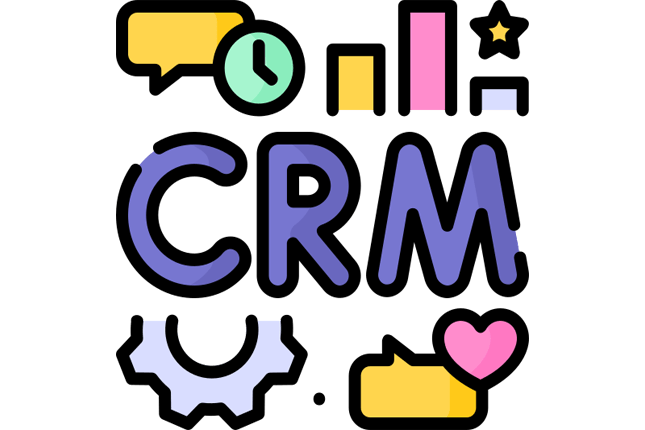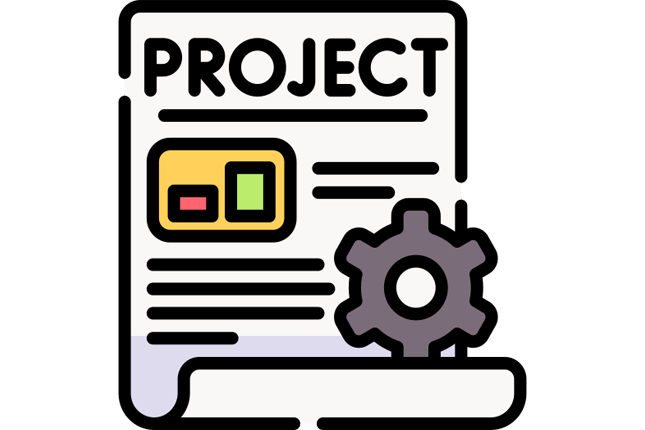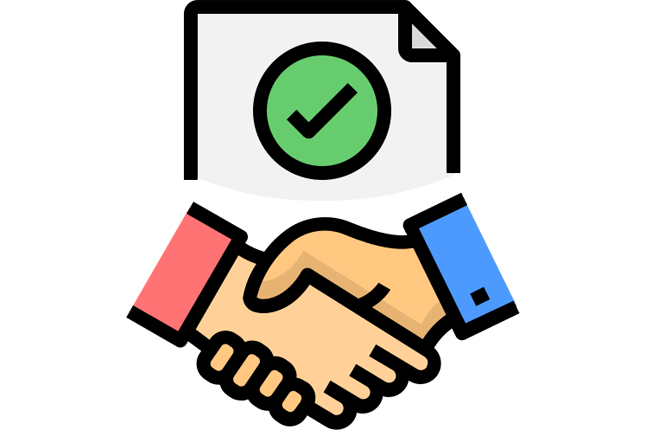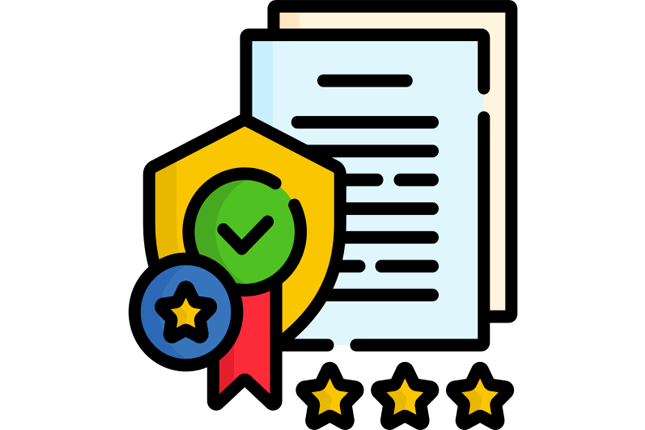Key Concepts in Business
Core Topics Driving Practical Business Success
Modern enterprises often juggle various concerns, from charting a structured plan to coordinating supply chains. This field calls for keen awareness of internal and external influences, along with a balanced view of revenue, processes, and employee engagement. The sections below explain core business topics that resonate with current conditions. Each area contributes distinct strengths to an organization, whether it involves motivating a diverse workforce, steering innovations in product lines, or maintaining solid ties with buyers.

Business Strategy and Planning
A successful organization depends on logical direction, clarity of objectives, and strong tactical thinking. Effective planning typically includes an assessment of competitor strengths, overall sector trends, and resource levels to determine where the organization can excel. Leaders might conduct detailed analyses of consumer behaviors or cost structures before selecting a path that either defends their standing or seeks new opportunities. A carefully defined plan spells out milestones—such as market share targets or expansion timetables—and establishes standards that guide day-to-day decisions.
These strategic efforts often begin with thorough discussions among executives who evaluate internal data, team capacities, and anticipated market changes. Individuals with expertise in research may collect performance metrics or track emerging technologies. The goal is to align every department, from sales to customer support, with priorities that advance measurable outcomes. In many workplaces, written roadmaps clarify responsibilities across each level of management, reducing misunderstandings about goals and timeframes.
Planners frequently revise strategies if unexpected hurdles appear, such as shifts in economic contexts or a dynamic competitor entering the field. A company might choose to refocus energy on niche segments, fortify relationships with loyal customers, or experiment with new lines that meet changing demands. By balancing big-picture vision with adaptability, organizations stay on track and manage risk more effectively.
Entrepreneurship and Startup Development
Starting a business calls for creativity, persistence, and readiness to respond to unexpected developments. Entrepreneurs seek gaps in existing offerings and design products or services that address these needs. Early momentum requires building prototypes, testing user reactions, and refining features based on initial feedback. Lean strategies allow startups to function with minimal overhead and respond swiftly to user concerns or competitor moves.
Talent acquisition is a pressing topic for new ventures. Founders look for people who can handle multiple roles, remain positive under pressure, and persevere through obstacles. Beyond that, a supportive network of mentors, industry contacts, or early customers can enhance the startup’s visibility. Formal pitch presentations introduce the concept to backers or partner organizations, paving the way for stable growth and a more consistent customer base.
Over time, startups often shift their business models if certain assumptions prove inaccurate. A team building a social media app might first focus on young demographics, then pivot upon discovering that older audiences show greater engagement rates. Establishing a culture that welcomes feedback and embraces learning helps small companies handle missteps and refine their directions in ways that can yield better results.
Financial Management and Budgeting
Sustained operations depend on how well teams track income and costs. Effective methods involve accurate recording of daily transactions, predictive modeling of future revenue, and reliable oversight of large-scale expenditures. A manager might define monthly or quarterly budgets, then compare actual spending with projected figures. This comparison reveals discrepancies and areas where adjustments can preserve financial health.
Pricing decisions also factor into revenue performance. If a brand sets prices too high, consumers may turn elsewhere, while a significantly low figure could strain margins. Observing purchase behavior and analyzing cost structures guide fine-tuning of these price points. In some cases, strategic reductions help move surplus goods, or promotions draw attention to newly launched lines.
Financial leadership may adopt ratio analysis to evaluate operational efficiency or check liquidity. By monitoring these figures periodically, decision-makers ensure that the enterprise can handle overhead, handle any debts, and maintain creditworthiness. Meanwhile, accurate data fosters trust among potential partners, because it underscores the company’s competence in resource allocation.
Leadership and Management Techniques
A sound organizational environment often emerges when leaders communicate goals, inspire teams, and uphold fair practices. Some managers emphasize task completion and detailed instructions, while others champion delegation and personal growth. In certain settings, a direct approach works best for urgent tasks, yet many modern teams thrive when employees have autonomy and can contribute fresh ideas.
Leaders also monitor how well departments coordinate. If one group’s decisions clash with another’s scheduling needs, misunderstandings can snowball. Effective leaders keep lines of communication open and encourage cross-department discussions that promote transparency. Feedback loops—both top-down and bottom-up—help employees sense that their viewpoints matter. Individuals who feel supported are more likely to push for excellence, share thoughtful opinions, and remain engaged over the long haul.
Organizations vary in whether they adopt formal hierarchies or flatter structures. In traditional frameworks, a clear chain of command makes responsibilities straightforward. On the other hand, flatter models often encourage broader collaboration. Regardless of the structure, successful leaders strive to nurture mutual respect, set clear objectives, and acknowledge strong performances.
Human Resources and Talent Acquisition
Recruiting and developing people can be as significant to success as refining a product’s design. Selecting applicants who align with organizational values is vital. That selection extends beyond professional know-how, reflecting personal attributes and attitude toward group work. Human resources teams guide the hiring experience, from writing a job description that accurately conveys requirements to organizing interviews that reveal candidates’ strengths and potential gaps.
Retention strategies matter as well. Orientation programs that introduce new arrivals to workflows and culture help them assimilate more quickly. Some entities schedule training sessions or mentorship arrangements that address skill progression. Others use recognition tools—like monthly awards or career path planning—to keep motivation high. The net impact is a workforce that feels valued and equipped to add tangible contributions.
Legal guidelines regarding fair labor practices, discrimination, and benefits remain part of HR’s duties. Documentation must be precise, and organizational policies should be clear, allowing employees to understand codes of conduct. Thoughtful treatment of personnel fosters loyalty, reduces turnover, and projects a positive public image that can draw future applicants.
Operations and Process Optimization
Transforming resources into finished products or services without wastage is a core operational goal. Managers evaluate production steps, supply usage, and workforce allocation to ensure outputs meet quality standards. Some groups rely on methodical approaches—like Lean principles—to trim needless actions and refine workflows. In practical terms, this might involve standardizing assembly lines, organizing storage so materials are always within reach, or automating repetitive tasks with the right equipment.
Process monitoring is an ongoing activity. If performance logs indicate slowdowns, managers investigate the bottlenecks and brainstorm fixes. Timely corrective measures, like reassigning staff or rearranging sequences, can keep targets on course. Organizations that streamline these steps frequently see cost savings, faster turnaround, and fewer errors.
Technology has made data tracking more accessible. Sensors on machinery or digital dashboards provide real-time indicators of how well the operation is running. Leaders can respond promptly if a batch deviates from specifications or if material usage spikes unexpectedly. This careful attention to detail fosters reliability and strengthens an entity’s reputation for consistent results.
Supply Chain Management
Reliable movement of goods from suppliers to storage facilities and onward to end customers is essential for timely deliveries. Specialists in supply chain planning analyze logistics routes, shipping fees, and partnerships with providers to keep operations moving smoothly. Whether orchestrating cargo via ocean freight, trucking, or air transport, they balance speed with cost to satisfy buyers’ expectations.
Global connectivity expands access to raw materials and new consumer segments but introduces complexities. Different regions have varied regulations, port capabilities, and customs procedures. Sudden events—like severe weather or political disruptions—may derail carefully planned timelines. Managers mitigate these uncertainties with contingency arrangements such as alternative shipping paths, backup suppliers, or buffer stock to sustain production if shipments are delayed.
Data analytics also plays a role. Detailed tracking of shipments can flag patterns that suggest repeated delays with a specific partner, prompting re-negotiation or a search for alternatives. By comparing actual shipping times against standard estimates, leaders can refine scheduling and provide more accurate information to end users. The ability to adjust swiftly, while maintaining cost efficiency, can elevate a business’s competitive standing.
Marketing and Brand Positioning
Attracting buyers and highlighting what sets offerings apart lies at the heart of marketing. A thoughtful plan begins with knowledge of consumer wants—collected via surveys, social media polls, or focus groups—before selecting the platforms that best reach them. Brand positioning involves presenting a distinctive message that stays consistent whenever products or services are promoted.
Campaigns may involve digital outreach, televised spots, or radio announcements. An apparel line might spotlight sustainable materials, while a meal service might emphasize convenience for busy households. Although the medium varies, brand consistency matters, so the style, tone, and message remain similar. Over time, these signals reinforce public trust in the enterprise’s image.
Promotional tactics might also incorporate special deals that stimulate interest or highlight product upgrades. Online channels enable precise targeting of audience segments, allowing businesses to direct messages to those most likely to respond positively. Marketers use performance indicators—like click rates or conversions—to see how effectively each strategy meets projected goals.
Sales Strategies and Client Engagement
Converting interested parties into paying customers involves skilled interactions. Sales professionals engage prospective clients with relevant information, answer concerns, and seek an agreement that benefits both sides. Training often focuses on refining communication skills, developing expertise in product features, and cultivating empathy to understand a buyer’s actual needs.
Face-to-face appointments remain common for products requiring demonstrations. However, virtual meetings or phone calls are equally vital in many sectors, particularly with geographically scattered audiences. A clear understanding of pricing and usage details helps sales reps demonstrate the practical advantages of an offering. Meanwhile, strong presentation aids or video demos bring abstract features to life, so decision-makers grasp the real benefits.
Client engagement does not end after a sale. Polite follow-up messages and swift responses to questions cultivate goodwill. Long-term relationships may lead to repeat purchases or recommendations to others in the client’s network. Organizations that track these interactions often discover patterns, such as a specific upgrade that existing clients find especially useful. Emphasizing these details can strengthen future sales pitches.
Customer Relationship Management (CRM)
Sustaining a loyal community requires consistent dialogue. CRM merges data across sources—support tickets, purchase histories, or social media—to build a detailed view of each user’s interactions. With that information, support staff can personalize responses, addressing concerns more efficiently and suggesting relevant add-ons.
Software platforms commonly generate reminders for follow-up, indicating when to check on a buyer’s satisfaction or propose a complementary service. This precision helps maintain healthy bonds and reduces the risk of desertion by neglected customers. Analytics can reveal at-risk segments that have not engaged for a while, prompting targeted reengagement through exclusive offers or direct calls.
CRM extends to marketing teams, who use the same data to design personalized campaigns. If a user frequently purchases specialized electronics, notifications about the latest related accessories might capture their attention. By respecting a user’s individuality and past choices, the brand shapes a friendlier presence, boosting trust over time.
Data Analytics and Business Intelligence
Large amounts of raw information are now available through e-commerce, sensors, and digital footprints. Data analytics transforms these inputs into insights that guide decisions on staffing levels, advertising effectiveness, or operational efficiency. Analysts might track web traffic sources to determine which channels drive the most conversions, then adjust marketing budgets accordingly.
Predictive models can forecast upcoming patterns, such as a rise in product demand during holiday periods or an increased interest after major news coverage. This knowledge allows better resource allocation in production and shipping. Meanwhile, spotting anomalies—like a sudden dip in a popular item’s sales—spurs further investigation. A quick response can address underlying causes, such as a faulty product batch or a competitor’s unexpected promotion.
Visualization tools translate dense data sets into charts or dashboards. A production manager could view real-time line speeds, while a financial officer might check current revenue estimates compared to targets. Easy access to these metrics promotes a culture of continuous improvement, where teams base strategies on evidence rather than guesswork.
Corporate Social Responsibility
Society pays close attention to companies’ ethical positions and their impact on communities. Many managers now integrate social or environmental considerations into strategic efforts. Projects might involve reducing the organization’s carbon footprint, donating resources to local groups, or adopting more transparent labor practices.
These initiatives can attract prospective customers who support like-minded efforts. They also strengthen the internal sense of pride among workers, who appreciate that their labor contributes to something broader than direct revenue. Formal reporting structures, such as sustainability reports, showcase progress toward specific targets—like cutting waste or implementing fair sourcing of raw materials.
Organizations that prioritize social responsibility must ensure authenticity. Consumers tend to notice when public claims do not match behind-the-scenes operations. A thoughtful approach, with clear metrics and honest discussions of successes or setbacks, can cultivate goodwill and strengthen an entity’s status within its industry.
Project Management and Execution
Coordinating tasks among multiple people and departments requires systematic oversight. Project managers set deadlines and allocate responsibilities that align with the broader vision. By outlining each stage and keeping track of progress, they control disruptions and curb inefficiency. Tools such as Gantt charts or project management platforms help participants see how responsibilities interlock.
Communication is the backbone of effective execution. Regular check-ins highlight milestones met, bottlenecks that need attention, or resources that might be lacking. A structured reporting method, either weekly or monthly, keeps stakeholders informed. If conditions shift—perhaps due to a delay in raw materials—timely notice allows the entire team to adjust.
Flexibility is often prized, especially if external changes affect the project. A technology initiative might face unexpected updates to platform requirements or user demands. Teams that recognize these changes promptly and adapt scheduling or task distribution avoid deeper setbacks. By closing out each phase with a review, managers gather lessons that inform better practices in future initiatives.
E-commerce and Online Retail
A growing number of buyers shop through the internet for convenience and variety. Organizations that enter e-commerce must build user-friendly websites with straightforward navigation. Such platforms generally include accurate product descriptions, visually appealing imagery, and dependable payment methods to boost shopper confidence.
A stable shipping process is equally significant. Late arrivals or unclear return guidelines can discourage users from revisiting an online store. Clear timelines, package tracking, and accessible customer service reassure people that their orders will be handled responsibly. Meanwhile, well-placed calls to action or personalized suggestions can encourage additional purchases.
Digital promotions often pair with e-commerce listings. Social media ads or email notifications drive visitors to product pages, while data analytics show which groups click through. A sporting goods site could emphasize running shoes during marathon season, monitoring which ads generate the highest interest among athletes. By continually refining these methods, online retailers expand their customer bases and keep pace with shifting trends.
Risk Management and Corporate Governance
Stable growth requires vigilance toward threats that might interrupt normal activities. Risk specialists watch market signals, regulatory announcements, and operational vulnerabilities, then compile evaluations of potential impacts. If a manufacturer relies on a single supplier for a vital component, the risk of shipping delays is significant. Mitigation might involve selecting multiple suppliers or stockpiling extra materials.
Corporate governance sets frameworks for how decisions are made and how accountability is upheld. Boards of directors oversee major directions, with committees that handle specialized tasks such as auditing or compensation structures. Transparent practices boost stakeholder confidence, whether these stakeholders are workers, clients, or community members. Serious lapses in governance may lead to fines or legal entanglements, so leadership invests energy in ensuring compliance.
Documentation plays a big part in risk management. By detailing known hazards, response steps, and lines of authority during a crisis, companies reduce confusion if issues emerge unexpectedly. Routine audits or penetration testing can identify hidden cracks in technology or record-keeping. This diligence offers a safety net against some of the biggest operational shocks.
Innovation and Product Development
Changing buyer expectations and emerging tech developments fuel the need for fresh offerings. Innovation teams brainstorm concepts, prototype them, and gather user opinions before finalizing details. In some organizations, separate labs or dedicated squads focus on cutting-edge solutions, free from everyday operational pressures.
Product creation involves balancing creativity with feasibility. A new design might appear promising in theory, yet manufacturing or regulatory standards could require substantial modifications. Early pilot programs or limited market tests can refine the concept with minimal risk. That feedback loop highlights areas that need redesign and reveals whether pricing, packaging, or marketing angles resonate with target audiences.
Companies that consistently update their catalogs often remain relevant. Adding specialized features or responding to buyer comments fosters an image of attentiveness. A phone manufacturer might implement software updates that address performance concerns, while a cosmetic brand could introduce eco-friendly packaging in line with consumer preferences. These periodic upgrades help a product line remain attractive and adaptable.
Negotiation and Relationship Building
Reaching favorable agreements with suppliers, co-developers, or distributors hinges on negotiation skills. Participants clarify goals, define non-negotiables, and seek terms that best serve each side. A balanced outcome typically endures longer because it fosters mutual respect and encourages repeat interactions.
Preparation is key. Managers research market conditions, competitor pricing, and each partner’s constraints to present proposals that align with real possibilities. Attentive listening during discussions ensures that miscommunication does not derail progress. Written summaries of each meeting confirm that both parties interpret the terms consistently.
Relationships matter beyond simple contracts. Consistent contact, quick resolution of disputes, and friendly gestures—like product samples or shared resources—build goodwill. When tough situations arise, partners who trust each other can negotiate new arrangements with less friction. Over time, reliable connections can lead to synergies that might open up fresh market segments or shared distribution networks.
Productivity and Time Management
Daily schedules fill rapidly with meetings, project milestones, and routine tasks. Effective organizations embed systems that help individuals prioritize and complete work without burnout. Some adopt digital tools that track tasks, set reminders, or block distracting apps, ensuring people remain focused on core responsibilities.
Leaders encourage staff to break large objectives into smaller, more manageable steps. This method reduces the intimidation factor of daunting projects and creates a sense of ongoing momentum. Frequent check-ins or stand-up gatherings can keep progress visible, prompting timely interventions if any team member falls behind.
Time management also involves setting realistic expectations. Overburdened employees are more likely to produce errors and feel demotivated. By allowing space for breaks, skill development, or unstructured brainstorming, companies enhance mental well-being. That sense of balance often leads to higher-quality work, stronger loyalty, and more creativity in problem-solving.
Organizational Culture and Employee Engagement
A company’s internal climate can amplify growth if it promotes collaboration and shared purpose. Culture is expressed through daily practices such as respectful communication, equitable promotion tracks, and willingness to listen to fresh perspectives. When employees see that leaders model these ideals consistently, they become more inclined to mirror the same behavior.
Team-building events—such as volunteer days or interactive workshops—help shape bonds across hierarchies. Honest feedback systems let workers voice suggestions or criticisms without fear of retribution. In turn, management gains insights into morale and operational barriers. This openness ultimately feeds into higher motivation and lower attrition, because people feel their work holds meaning and that they are recognized.
Some entities formalize these efforts by defining values on paper, but genuine culture is often revealed in small daily actions. A new recruit who experiences mentoring by more experienced colleagues, or a junior manager who is encouraged to share ideas in leadership meetings, sees that collaboration is more than a slogan. The end result is an environment where diverse backgrounds can flourish and better solutions can emerge.
Compliance and Legal Considerations
Operating ethically requires adherence to local or international regulations covering areas like data privacy, taxation, and labor rules. Complex industries, such as healthcare or aviation, contain strict licensing protocols that must be observed. Noncompliance risks fines, lawsuits, or, in severe cases, closure.
In many entities, a designated department ensures that new procedures stay within legal boundaries. Guidance documents and employee training sessions clarify how to handle client data or fulfill reporting obligations. Regular audits help uncover hidden gaps in documentation or procedures, allowing corrections before significant damage occurs.
By staying informed on updates to laws and guidelines, business leaders can plan expansions or new product lines more confidently. If an online retailer wants to launch services in a new country, they must understand shipping tariffs or consumer protection mandates. Anticipating these obligations in advance reduces complications and strengthens trust with local authorities and communities.
Cross-Border Business and Global Strategy
Expanding beyond domestic boundaries offers broad reach but also amplifies complexity. Distinct markets exhibit unique consumer tastes shaped by cultural, economic, or linguistic nuances. A company might decide to adapt packaging or rename certain products if the original branding fails to resonate abroad.
Negotiating with foreign partners means acknowledging local norms around communication, negotiation style, or punctuality. Some areas prioritize personal relationships before official contracts, while others favor quick, formal transactions. Doing prior research can smooth these encounters. A strong local presence, perhaps through representatives who understand the region, also helps guide decisions.
Currency fluctuations, shipping constraints, and different legal frameworks present ongoing challenges. Entities weigh these factors to set appropriate pricing or time frames. Localization strategies that address language differences—from bilingual customer support to region-specific social media channels—further enhance acceptance. Building cross-border ties in a consistent manner positions a venture for stable operations, even if global trends shift.
Wrapping It Up
Each of these subjects offers a path to more robust performance and resilience. Engaging with financial planning, supply chain arrangements, brand positioning, or new product research improves an organization’s chances of meeting consumers’ demands while juggling resource constraints. Over time, a balanced approach leads to confident leadership, a supportive internal culture, and lasting customer relationships. By refining each area incrementally, modern enterprises stand ready to handle changes in the market and unlock fresh opportunities in a business environment that never stands still.






















